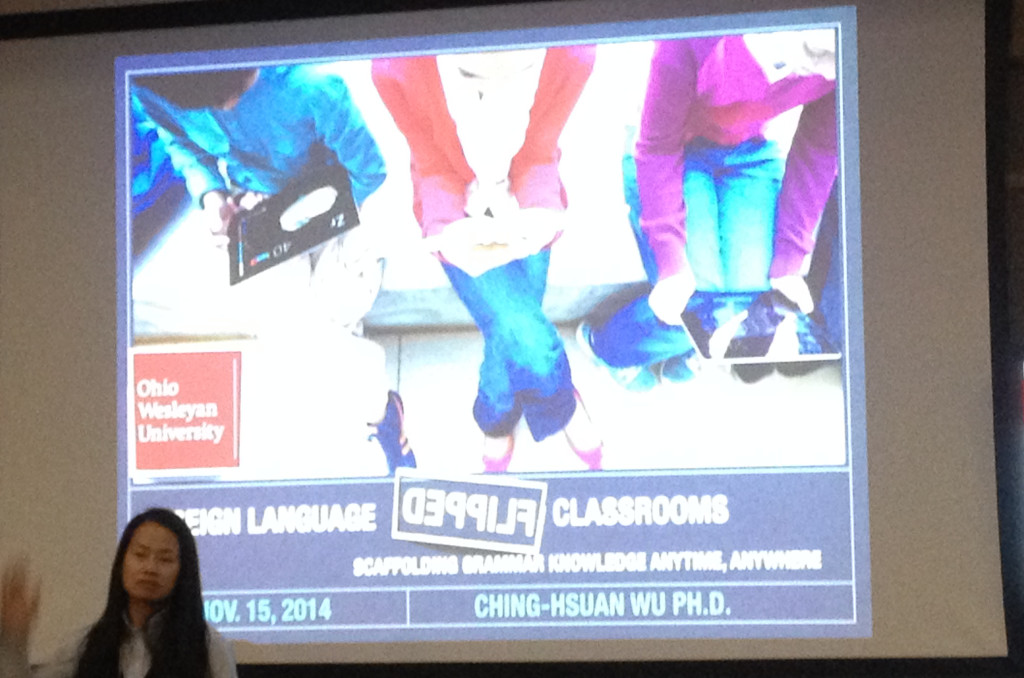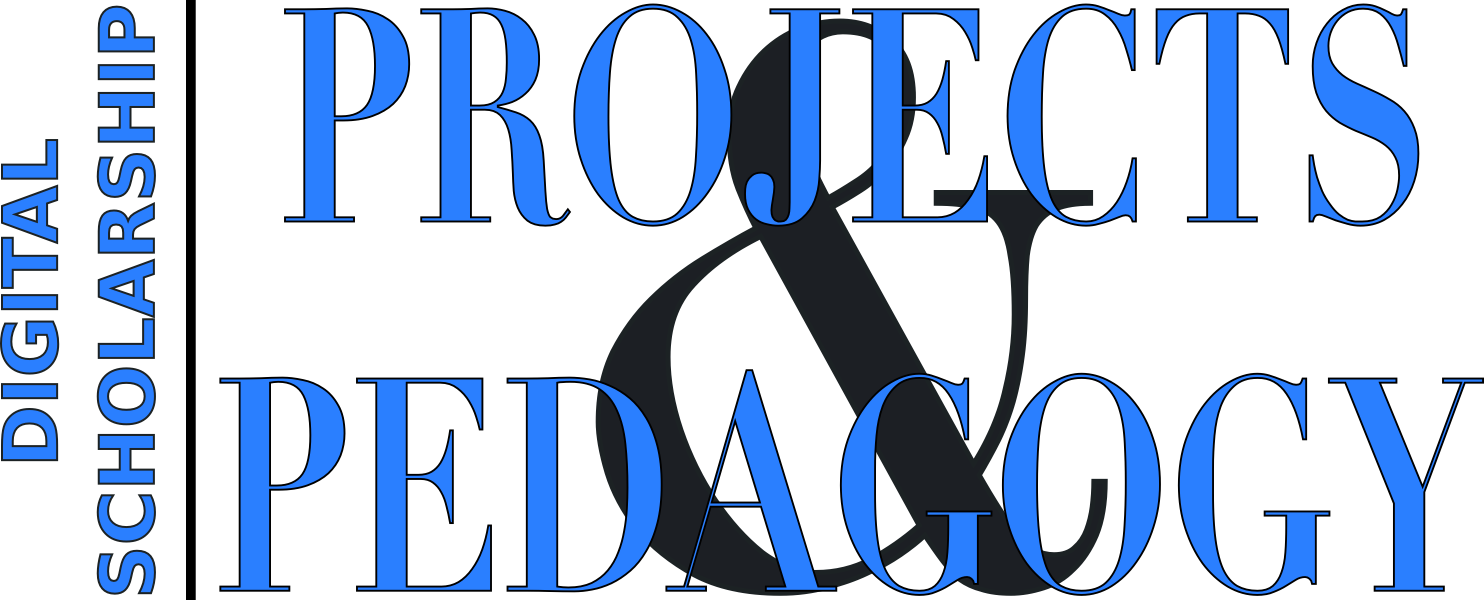 On 14-16 November, Ohio Wesleyan’s Ching-Hsuan Wu presented on “Foreign Language Flipped Classrooms – Scaffolding Grammar Knowledge Anytime, Anywhere.” Part of a panel on “Faculty-Student Partnerships in the Hybrid Classroom,” Prof Wu’s presentation was interactive and engaging as she modeled her pedagogy even while presenting on this example of it. Here’s the abstract of her presentation:
On 14-16 November, Ohio Wesleyan’s Ching-Hsuan Wu presented on “Foreign Language Flipped Classrooms – Scaffolding Grammar Knowledge Anytime, Anywhere.” Part of a panel on “Faculty-Student Partnerships in the Hybrid Classroom,” Prof Wu’s presentation was interactive and engaging as she modeled her pedagogy even while presenting on this example of it. Here’s the abstract of her presentation:
The presentation introduces a collaborative pedagogical project that aims to improve and promote the digitalized interface of teaching and learning in studies of foreign languages for liberal arts colleges through the concept of the flipped classroom. The goal of the project is to develop a digital collection of self-directed grammar learning clips through which students study descriptive linguistic facts independently prior to their class meetings, thus creating space for instructors to use face-to-face class time more effectively by focusing on interactive language use and application–skills that often require practice with other speakers of the target languages in appropriate contexts. Motivated by this objective, the project team, including foreign language educators, librarians, students, and information technology specialists, collaboratively design, critique, and revise the materials and discuss plans for disseminating and publicizing this learning resource. The project, funded by the Andrew W. Mellon Foundation, produces a set of thirty five-minute teaching video clips on Chinese grammar points selected and sequenced by frequency and usefulness in authentic language use at intermediate levels. The learning content in the clips is delivered by a professor at Ohio Wesleyan University with guest professors and students from other collaborating colleges to approximate digitally the classroom style of learning that is valued by liberal arts colleges.
In addition, I presented a lightning talk as a part of a roundtable on “Institutional Models for Digital Scholarship and Collaboration.” The gist of my talk — which, as a lightning talk, is mostly gist — was that we mustn’t forget the human elements when we’re collaborating on digital projects. I talked about our efforts in the Ohio Five to connect these distance digital scholars and to bridge silos wherever possible. Removed from context the slides won’t be as useful as one might hope; again, though, the gist should be clear. Maybe.
I’ve been telling anyone who’ll listen about this conference, especially for those in liberal arts colleges and universities who have folded together teams of faculty, students, and technologists of all sorts. There were a great many panels that, when they didn’t actually feature student presenters, directly addressed students’ roles in building these digital projects or in shaping these digital pedagogies. It was an immersive couple of days, but the scheduling created perfect pockets of time for sidebar conversations. It had an active backchannel and the IRL interactions came easy in that crowd.
